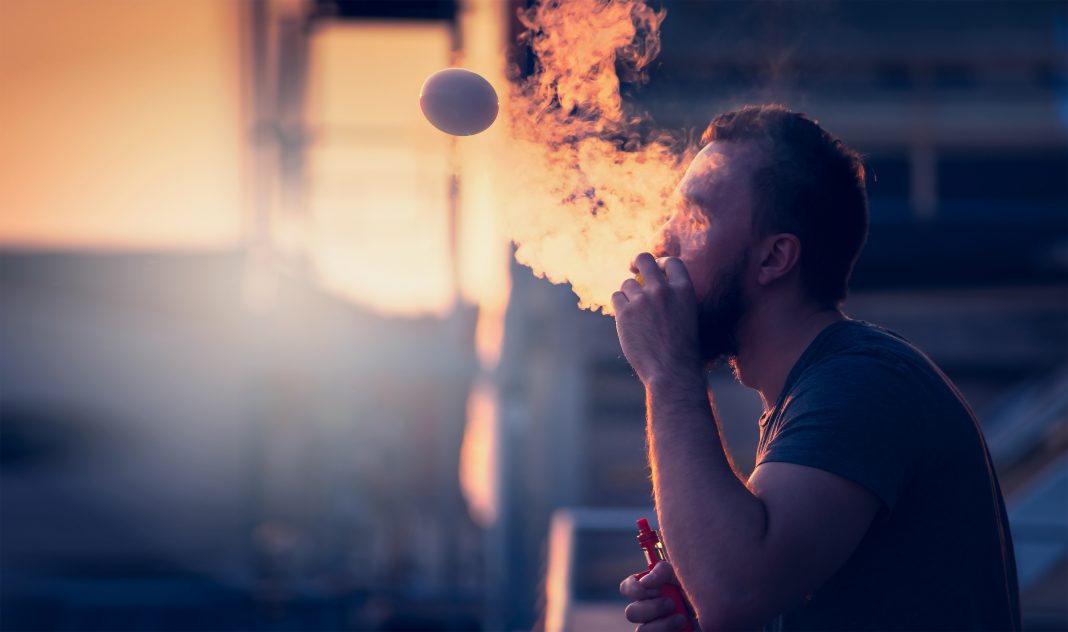High levels of sweet and fruit-flavoured chemicals are found in e-cig liquids, but the question is: are they dangerous?
Marketed as ‘tobacco-flavoured’, e-cigarette liquids subtly contain high levels of sweet and fruit-flavoured chemicals in order to appeal to young people, says the journal Tobacco Control.
Compared with a decade ago, the journal has highlighted that the amount of sugary flavours available in e-cig liquids has skyrocketed.
This recent trend coincides with the US Food and Drug Administration’s (FDA) ban on the sale of cartridge-based flavoured e-cig liquids – with the exception of menthol and tobacco flavours – in a bid to dissuade young people from smoking them.
Manufacturers are managing to get around the regulations
However, manufacturers are managing to get around the regulations, say the researchers.

The evolution of e-cig liquid flavours
E-cig liquid formulations have been evolving rapidly over the past decade as flavour chemicals like fruit, candy, and sweet flavours, are particularly important to young people, say the Tobacco Journal researchers.
Disposable products not covered by FDA’s ban
Disposable products, such as Puff, which are very popular with young people especially, are not covered by the FDA’s ban.
The researchers, therefore, wanted to find out if e-cigarettes marketed as ‘tobacco flavoured’ contained sweet and fruit flavour chemicals that would likely appeal to young people.
They drew on their extensive database (UCR/PSU Electronic Cigarette Data Collection) of e-liquid and aerosol flavour chemicals, acids, reaction products and metals to identify any trends and changes in chemical composition and levels since 2010-11.
They then compared the number and amount of flavour chemicals in 63 ‘tobacco-flavoured’ e-cigarette refill fluids purchased between 2011 and 2019 and 2 popular pod-style e-cigarette brands—JUUL and Puff.
Tobacco-flavoured products purchased in 2010 and 2011 had very few flavour chemicals
In 2010 and 2011, the levels of flavour chemicals found in tobacco-flavoured e-cig liquids were generally very low.
In fact, nearly two-thirds (63%) of the refill fluids bought before 2019 had levels of flavour chemicals below 2 mg/ml, and most (84%) were below 5 mg/ml.
But fast forward to 2019: the total number and level of flavour chemicals in ‘tobacco flavoured’ refill fluids purchased in 2019 and in Puff Bar Tobacco e-cigarettes were higher than expected.
Among the 13 refill products bought in 2019, more than half (54%) had total flavour chemical levels above 10 mg/ml. Products with total flavour chemicals of more than 10 mg/ml contained 1 to 5 dominant flavour chemicals (each more than 1 mg/ml).
The 5 most frequently used flavour chemicals in ‘tobacco flavoured’ e-liquids were predominantly fruity and caramellic:
- Ethyl maltol (sweet or caramel, 60%)
- Corylone (caramellic, maple, 44%)
- Menthol (33%)
- Vanillin (25%)
- Maltol and triacetin (fruity, creamy, 24%)
Nine sweet and fruit flavour chemicals, used mainly in products bought in 2016 and 2019, were at levels above 2 mg/ml.
JUUL has marketed two tobacco flavours, ‘Classic’ and ‘Virginia’. Total flavour chemical levels for both these products were below 0.35 mg/ml, while levels of the individual chemicals were, in most cases, equal to, or less than, 0.05 mg/ml.
Different flavour chemicals were used in the ‘Classic’ and ‘Virginia’ products, suggesting these were added intentionally to create distinct tastes for each product.
Puff ‘Tobacco’, on the other hand, had 27 different flavour chemicals adding up to a total of 34.3 mg/ml. Individual chemicals ranged from 0.03 to 15 mg/ml.
Four flavour chemicals (vanillin, ethyl maltol, ethyl vanillin and corylone), which were the highest (range 2.07–15 mg/ml), are typically used in sweet-flavoured e-cig liquids, such as Dewberry Cream, which is popular with young vapers, note the researchers.
For the dominant flavour chemicals found in both brands, levels of vanillin were 300 times higher in Puff than in JUUL, while ethyl maltol was 239 times higher, and corylone 41 times higher.
The total number of flavour chemicals used in Puff Bar Tobacco was greater than those found in nearly all (94%) of the refill fluids evaluated.
Should we be concerned about the flavours of e-cig liquids?
“Concern has been raised previously about the safety of flavour chemicals when inhaled at these high concentrations,” said the research team.
FEMA has not evaluated them for inhalation toxicity
“Although these particular flavours are Generally Regarded As Safe by the Flavor Extract Manufacturers Association (FEMA) for ingestion, FEMA has not evaluated them for inhalation toxicity.”
They conclude: “It is important for the FDA to identify and quantify flavour chemicals before authorising Premarket Tobacco Applications (PMTA) for two reasons.
“First, flavour chemicals are often used in e-liquids without safety data at concentrations much higher than those found in other consumer products. Second, our data show that e-cigarette manufacturers are manipulating e-liquid formulations apparently to circumvent flavour chemical regulations.”












It is a set of dangerous products